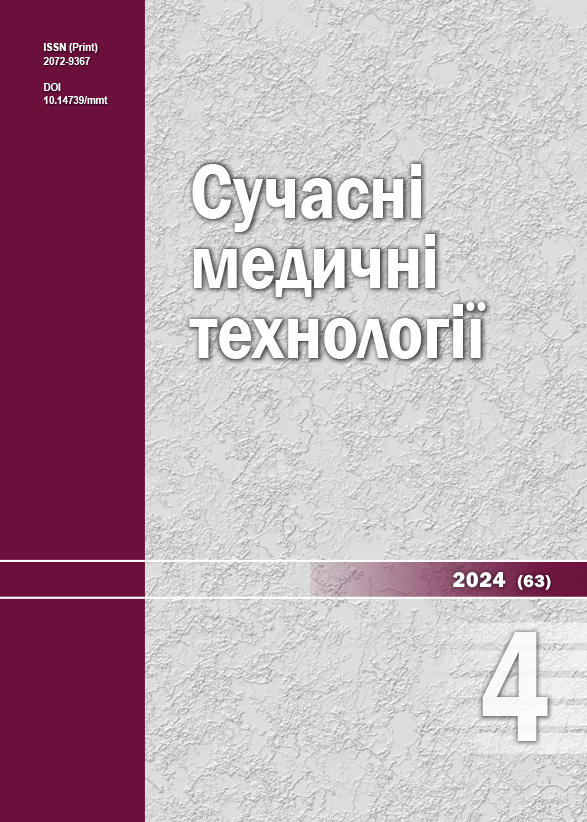The results of many years of complex use of cycle- and power-ergometry in determining the physical capacity of young athletes
DOI:
https://doi.org/10.14739/mmt.2024.4.304933Keywords:
physical endurance, cycle-ergometry, power-ergometry, results, young, athletesAbstract
Aim of the work: to assess the results of a complex use of cycle- and power-ergometry in determining the aerobic and anaerobic-aerobic performance in young athletes for the selection of criteria in predicting athletes’ sports abilities and performance results at competitions in certain sports.
Materials and methods. Young athletes aged 15–16 (n = 636) took part in the study in which they represented two groups of athletes according to a training process direction: group A (n = 260) – speed-power sports (boxing, freestyle wrestling); group B (n = 376) – endurance sports (athletics, skiing, cycling, swimming). According to the results of their performance at competitions, all athletes were additionally divided into two groups: 1) a group of people who won prize places at competitions in their chosen sports – winners, 2) a group of their peers who unsuccessfully performed at competitions – outsiders. Physical working capacity was determined using two methods: cycle ergometric test PWC170 and power-ergometric test PWC170. Submaximal ergometric test PWC170 (Physical Working Capacity, PWC) is a method based on the determination of physical working capacity (load capacity) upon reaching a heart rate of 170 beats·min-1.
Results. The fact of possible prediction of sports results at competitions of adolescents in sports chosen by them, depending on the nature of changes in indicators of aerobic and anaerobic-aerobic performance PWC170, was established. Examples of the performance of young athletes at competitions are given. Statistically significant differences were found in the indicators of aerobic (cycle-ergometry) and anaerobic-aerobic performance (power-ergometry) of athletes-winners and outsiders.
Conclusions. A complex use of cycle- and power-ergometry allows to determine the level of contribution of each type of energy potential separately – aerobic (aerobic performance PWC170) and anaerobic-aerobic (anaerobic-aerobic performance PWC170) to the general physical working capacity (PWC). In our opinion, the level of aerobic and anaerobic-aerobic performance PWC170 (according to PWC index proposed by us) may be one of the criteria in predicting athletes’ sports abilities and performance results at competitions in certain sports.
References
Dutchak М, Shakhlina L, Futornyi S, Pershehuba I. [Public health: debatable issues, ways of their practical solution]. Sports medicine and physical rehabilitation, 2020;(1):3-9. Ukranian. doi: https://doi.org/10.32652/spmed.2020.1.3-9
Alajmi RA, Foster C, Porcari JP, Radtke K, Doberstein S. Comparison of non-maximal tests for estimating exercise capacity. Kinesiology. 2020;52:10-8. doi: https://doi.org/10.26582/k.52.1.2
Ejaz Asghar, Noor Muhammad Marwat, Alamgir khan, Ishrat Ali Virk, Alia, Habib Ullah, et al. Physical And Psychological Factors Affecting Athlete’s Performance. Elementary Education Online. 2020;19(4):5794-802. Available from: https://ilkogretim-online.org/index.php/pub/article/view/6020
Zenina I, Gavrilova N, Kuzmenko N, Kachalov O. Factors that ensure an adequate level of physical fitness in female students of higher education institutions. Scientific Journal of NPDU. Physical culture and sports. 2022;12:36-9. doi: https://doi.org/10.31392/NPU-nc.series15.2022.12(158).09
Dzenzeliuk D, Denisuk N, Pantus O, Denysovets A. [Аssessment of the functional-reserve capabilities of the cardiovascular system of student youth]. Scientific Journal of NPDU. Physical culture and sports. 2023;10:72-7. Ukrainian. doi: https://doi.org/10.31392/NPU-nc.series15.2023.10(170).16
Tsanko II, Antonova-Rafi YV, Kurilo SM, Danko DI. [Examination methods in physical therapy, occupational therapy]. Kyiv: KPI named after Igor Sikorskyi; 2023. Ukrainian.
Short TP. The Pursuit of Peak Athletic Performance. Topics in Exercise Science and Kinesiology. 2023;4(1):3. Available from: https://digitalscholarship.unlv.edu/cgi/viewcontent.cgi?article=1054&context=scholarship_kin
Diachenko А, Rusanova О, Huang Z, Chenging Y. [Characteristics of special work capacity functional support in skilled 1000 m kayakers and canoeists]. Nauka v olimpiiskom sporte. 2020;(4):16-23. Ukrainian. Available from: https://sportnauka.org.ua/wp-content/uploads/nvos/articles/2020.4_2.pdf
Ieremenko N, Shynkaruk O, Moseychuk Y, Moroz O, Ivashchenko, O, Yarmak O, et al. Analysis of Main Ergometric Parameters of Elite Kayak Athletes Specialized in Different Distance Events. Sport Mont. 2021;19(2):59-63. doi: https://doi.org/10.26773/smj.210610
Shynkaruk O, Shutova S, Serebriakov O, Nagorna V, Skorohod O. Competitive performance of elite athletes in modern ice hockey. Journal of Physical Education and Sport. 2020;20(1)76:511-6. doi: https://doi.org/10.7752/jpes.2020.s1076
Khoroshukha MF, Filippov MM, Bosenko AI, Mykhaliuk YL, Buriak OY. Complex use of cycle- and power-ergometry in determining the physical working capacity of young athletes. Modern medical technology. 2023;(4):37-44. doi: https://doi.org/10.34287/MMT.4(59).2023.5
Bringhurst RF, Wagner DR, Schwartz S. Wingate Anaerobic Test Reliability on the Velotron With Ice Hockey Players. J Strength Cond Res. 2020;34(6):1716-22. doi: https://doi.org/10.1519/JSC.0000000000002458
Fares MY, Khachfe HH, Salhab HA, Bdeir A, Fares J, Baydoun H. Physical Testing in Sports Rehabilitation: Implications on a Potential Return to Sport. Arthrosc Sports Med Rehabil. 2022;4(1):e189-e198. doi: https://doi.org/10.1016/j.asmr.2021.09.034
Lunn WR, Axtell RS. Validity and Reliability of the Lode Excalibur Sport Cycle Ergometer for the Wingate Anaerobic Test. J Strength Cond Res. 2021 1;35(10):2894-01. doi: https://doi.org/10.1519/JSC.0000000000003211
Wood R. Speed and Power Fitness Tests [Internet]. Topendsports.com. 2019. Available from: https://www.topendsports.com/testing/anaerob.htm
Beitia P, Stamatis A, Amasay T, Papadakis Z. Predicting Firefighters’ Physical Ability Test Scores from Anaerobic Fitness Parameters & Mental Toughness Levels. Int J Environ Res Public Health. 2022;19(22):15253. doi: https://doi.org/10.3390/ijerph192215253
Aktas S, Cakmakci O. Examination of lower-upper limb of power and force parameters of elite athletes. Phys Educ Stud. 2020;24(6):340-7. doi: https://doi.org/10.15561/20755279.2020.0606
Arıkan Ş, Revan S. The Effect of Bicycle Training Program on Aerobic and Anaerobic Performance. Turk J Sport Exe. 2020;22(1):19-23. Available from: https://dergipark.org.tr/en/pub/tsed/issue/53281/678929
Hammami M, Gaamouri N, Suzuki K, Shephard RJ, Chelly MS. Effects of Upper and Lower Limb Plyometric Training Program on Components of Physical Performance in Young Female Handball Players. Front Physiol. 2020;11:1028. doi: https://doi.org/10.3389/fphys.2020.01028
Silva AF, Ramirez-Campillo R, Ceylan Hİ, Sarmento H, Clemente FM. Effects of Maturation Stage on Sprinting Speed Adaptations to Plyometric Jump Training in Youth Male Team Sports Players: A Systematic Review and Meta-Analysis. Open Access J Sports Med. 2022;13:41-54. doi: https://doi.org/10.2147/OAJSM.S283662
Downloads
Additional Files
Published
How to Cite
Issue
Section
License
The work is provided under the terms of the Public Offer and of Creative Commons Attribution-NonCommercial 4.0 International (CC BY-NC 4.0). This license allows an unlimited number of persons to reproduce and share the Licensed Material in all media and formats. Any use of the Licensed Material shall contain an identification of its Creator(s) and must be for non-commercial purposes only.














